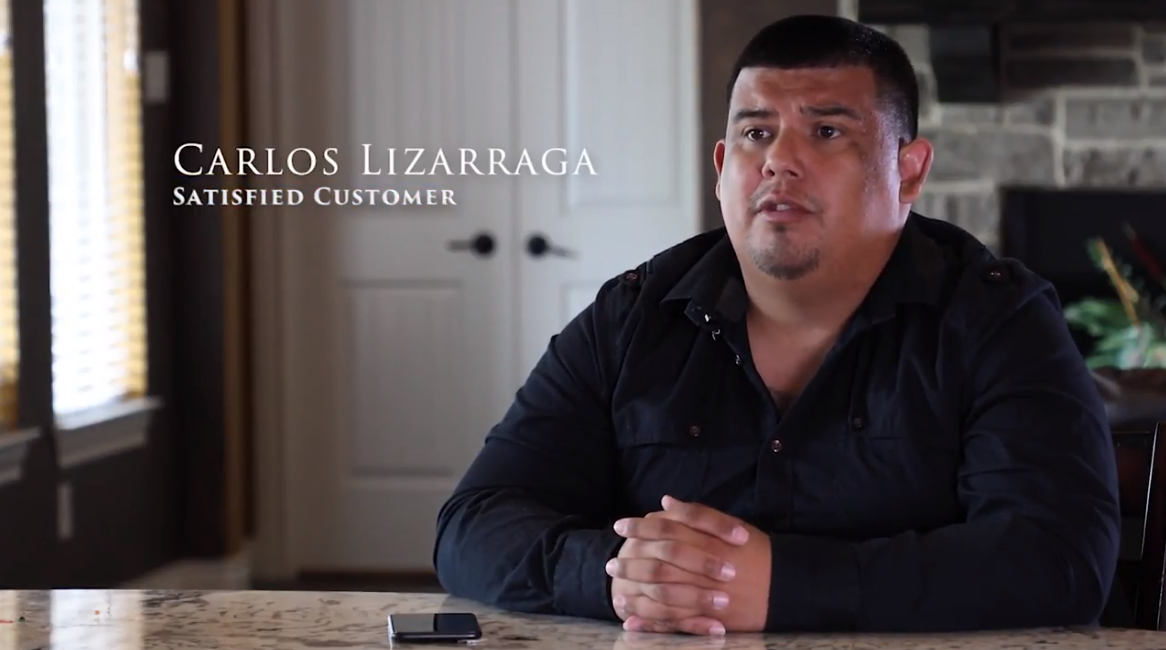HOUSTON REMOTE CONTROLS
Click The Button Below For Your Free Checklist:
The 7 questions to ask security camera installers over the phone and 3 questions they hope you never ask...
Downloading this easy-to-follow guide will keep you up to date on the perfect questions to ask that will keep sales reps in check.
Due to the rapid technology changes in the security camera industry we constantly make updates to this report, keeping you on the cutting edge of what still matters when safely choosing an installation company. Knowing the right questions to ask allows you to let phone salespeople and in-person estimators know just how much of a well educated and experienced buyer you are. This demonstration of knowledge will most often discourage unethical sales reps from even trying to take advantage of you during this very serious purchase decision.
![]() We value your privacy and would never spam you
We value your privacy and would never spam you
CALL NOW and Speak With A Friendly Installer...
(832) 470-0740
In electronics, a remote control is a component of an electronic device used to operate the device from a distance, usually wirelessly. For example, in consumer electronics, a remote control can be used to operate devices such as a television set, DVD player, or other home appliance, from a short distance. A remote control is primarily a convenience feature for the user, and can allow operation of devices that are out of convenient reach for direct operation of controls. In some cases, remote controls allow a person to operate a device that they otherwise would not be able to reach, as when a garage door opener is triggered from outside or when a Digital Light Processing projector that is mounted on a high ceiling is controlled by a person from the floor level.
History
In 1894, the first example of wirelessly controlling at a distance was during a demonstration by the British physicist Oliver Lodge, in which he made use of a Branly's coherer to make a mirror galvanometer move a beam of light when an electromagnetic wave was artificially generated. This was further refined by radio innovators Guglielmo Marconi and William Preece, at a demonstration that took place on December 12, 1896, at Toynbee Hall in London, in which they made a bell ring by pushing a button in a box that was not connected by any wires.[3] In 1898 Nikola Tesla filed his patent, U.S. Patent 613,809, named Method of an Apparatus for Controlling Mechanism of Moving Vehicle or Vehicles, which he publicly demonstrated by radio-controlling a boat during an electrical exhibition at Madison Square Garden. Tesla called his boat a "teleautomaton".
In 1903, Leonardo Torres Quevedo presented the Telekino at the Paris Academy of Science, accompanied by a brief, and making an experimental demonstration. At the same time he obtained a patent in France, Spain, Great Britain, and the United States. The Telekino consisted of a robot that executed commands transmitted by electromagnetic waves. With the Telekino, Torres-Quevedo laid down modern wireless remote-control operation principles[5] and was a pioneer in the field of remote control. In 1906, in the presence of the king and before a great crowd, Torres successfully demonstrated the invention in the port of Bilbao, guiding a boat from the shore. Later, he would try to apply the Telekino to projectiles and torpedoes, but had to abandon the project for lack of financing. The first remote-controlled model aeroplane flew in 1932, and the use of remote control technology for military purposes was worked intensively during the Second World War, one result of this being the German Wasserfall missile.
By the late 1930s, several radio manufacturers offered remote controls for some of their higher-end models.[6] Most of these were connected to the set being controlled by wires, but the Philco Mystery Control (1939) was a battery-operated low-frequency radio transmitter,[7] thus making it the first wireless remote control for a consumer electronics device. Using pulse-count modulation, this also was the first digital wireless remote control.
How does a remote control work?
You may already know something about the EM (electromagnetic) spectrum. The light we see is part of the EM spectrum. Radio waves, microwaves, and X-rays are part of it, too. Another part is called infrared. Like all parts of the EM spectrum, infrared is a kind of energy that moves in waves. Our eyes can't see infrared waves. We can't see radio, microwaves, or X-rays, either. Infrared waves act in the same ways that light does. Infrared is reflected, or bounces off, light things better than dark things. It is absorbed by dark things better than by light things. Light travels in a straight line and so do infrared waves.
TV remote sends out a beam of infrared waves. It sends out different codes for different commands. The TV set receives the beam. A microchip inside the TV "reads" the beam, much like your brain "reads" the signals sent to it by your eyes. The microchip tells the TV what you want it to do. The remote can tell it to turn the volume up or down. The remote can tell your TV to change channels.
Remotes can send messages to your TV in a straight line. You can't use the remote in another room and get the TV to do what you want. You can't stand between a person using the remote and the TV. You must point the remote at the TV and not be too far away, and you must not block the infrared beam.
Remote control codes
It's no good the remote control just sending out a burst of random infrared. Clearly if your remote control has 20 or more buttons on it, it must have a way of sending out at least this many signals—each one different enough for your TV to be able to decode and understand it. When you press one of the buttons, the remote generates a systematic series of on/off infrared pulses that signal a binary code (a way of representing any kind of information using only zeros and ones, which computers use). So a short pulse of infrared could signal a 1 and no pulse could signal a 0. Sending many infrared pulses, one after another, allows your remote to send whole strings of zeros and ones. One code (maybe it's 101101) might mean "volume up", while another (perhaps 11110111) could mean "mute sound."
As well as sending out pulses that tell the TV what you want it to do, the remote also sends a short code that identifies the product you're trying to control (for example, a specific make and model of TV). That ensures your remote operates only the TV, not the video, and not any other TVs that happen to be nearby. Generally, this means each remote control unit can operate only one appliance made by only one manufacturer. Of course if you could discover the codes that different TVs and videos understand, you could build a remote control that operated any appliance. This is how universal remotes work. They let you control any TV or video and, instead of sending out only signals specific to one brand of equipment, they can send out codes that any make or model can understand. One inventor has even gone so far as to develop a remote called TV-B-Gone that systematically sends out a "switch TV off" signal using every possible manufacturer's code. It's designed to allow TV haters to switch off annoying TVs covertly as they wander through shopping malls and department stores!
PROS:
Convenience
The major advantage to using a TV remote is the convenience it offers when watching television, especially for people with disabilities to operate devices at a distance. Without a remote, you’d have to walk over to the television and manually switch the channel every time you wanted to see something new, which would be time consuming if you had hundreds of channels to choose from. With a remote, you can easily switch from one station to another. For example, if you were watching your favorite show and it went to commercial break, you could switch over to another show during that break without needing to stand up.
Other benefits of a remote control are:
- Portability
- Ease of use
- Energy saver (human)
CONS:
Here are some of the disadvantages of a remote control:
- No response when objects block the infrared light that causes difficulties.
- Need to replace batteries regularly
- Small buttons
- Easily lost
- Has distance limit in controlling devices.
Service hours:
24 hours a day 7 days a week
Office Line:
(832) 470-0740
Email:
sales@houstonhomeautomation.net
Fully Licensed & Insured
Copyright ©2017 Houston Security Camera Installation
We Accept All Major Credit Cards





